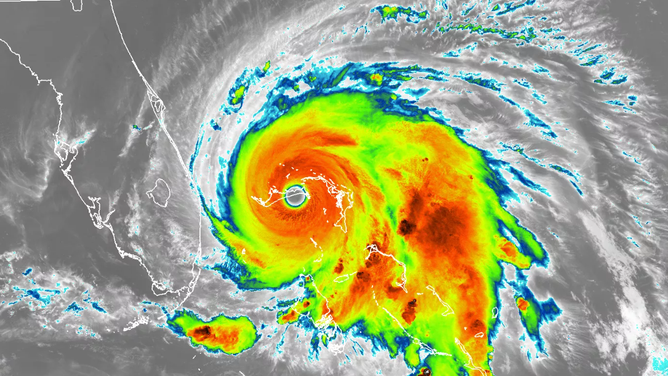Critical forecast tool upgraded just in time for 2022 Atlantic hurricane season
The Advanced Dvorak Technique (ADT) uses full-resolution images from weather satellites, better identifies the storm eye location and analyzes hurricanes outside tropical regions
A crucial tool that meteorologists use to forecast hurricanes is being upgraded just in time for the start of the 2022 Atlantic hurricane season.
The University of Wisconsin announced the significant upgrade to the Advanced Dvorak Technique (ADT) and says it will use full-resolution images from weather satellites, better identification of the storm eye location and the ability to analyze hurricanes occurring outside tropical regions.
ADT was developed by researchers at the University of Wisconsin–Madison Cooperative Institute for Meteorological Satellite Studies (CIMSS).
THE HISTORY OF THE PIONEERS BEHIND THE ATLANTIC HURRICANE SEASON FORECASTS
The tool, used by forecasters at the National Oceanic and Atmospheric Administration’s National Hurricane Center, estimates the intensity of tropical cyclones and indicates when the storm might strengthen using infrared satellite imagery. Its capability to signal tropical cyclones that may approach coastal areas benefits emergency planners who need to issue evacuation orders for residents.

A nearly perfect circular eye inside Hurricane Dorian, a powerful Category-5 storm. The image above shows this remarkable storm structure from S-NPP at 3:03 am EDT on Sept. 2, 2019.
(NOAA/CIMSS)
"The ADT itself is not a prediction tool, but it does help describe the current state of tropical cyclone intensity, which provides the critical starting point for both forecaster and model-based predictions of future track and intensity," says senior scientist Christopher Velden, who leads the CIMSS Tropical Cyclone Group.
WHY THE START DATE OF THE ATLANTIC HURRICANE SEASON WON’T CHANGE ANYTIME SOON
It was first developed in the mid-1990s by NOAA researcher Vernon Dvorak as a method to estimate hurricane intensity. It wasn’t until the mid to late 2000s that new technique advancements were implemented into the algorithm, and ADT was implemented and supported by NOAA.
There continue to be advancements in satellite meteorology, which help revolutionize the field and further enhance the accuracy of ADT.
"For us, the goal is to provide a tool so forecasters can do their jobs better," says CIMSS researcher Tim Olander. "We have always tried to support them by incorporating their recommendations and ideas for improving our algorithms."
A link to real-time ADT estimates can be found here.